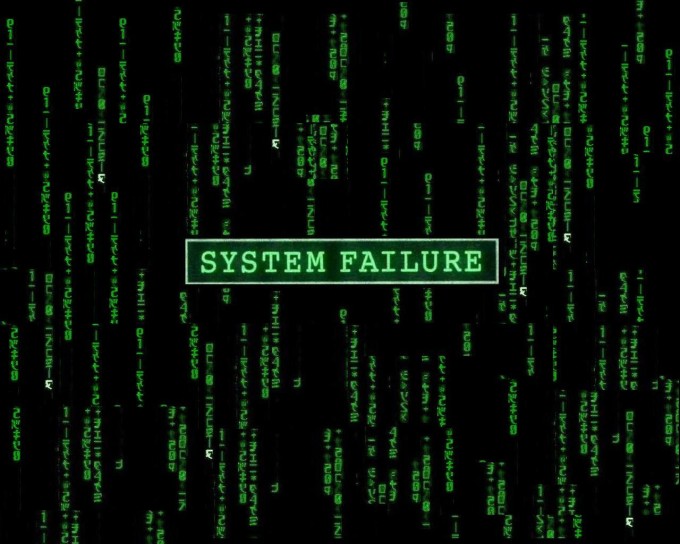 There’s an old aphorism – and a true one – which holds that companies are only as strong as the employees who work for them. That’s why hiring the right talent is such a crucial core competency at any business and key drivers for long term success.
There’s an old aphorism – and a true one – which holds that companies are only as strong as the employees who work for them. That’s why hiring the right talent is such a crucial core competency at any business and key drivers for long term success.
One of the reasons why talent represents such a critical competitive advantage is a simple one: recruiting isn’t easy. And effective recruiting is even harder, involving a significant investment in terms of time and money for any sized company, from mom and pop shop to enterprise employer.
But as much time and attention as we give recruiting, and as much lip services as most employers pay to prioritizing recruitment, one fundamental factor is too often overlooked: taking a critical look their current recruiting processes and systems.
That’s because successfully hiring top talent requires companies to take a step back before rushing to reactively fill requisitions and thoroughly evaluate their big picture talent acquisition objectives, how their current processes align with those objectives and whether or not they’ve got the right resources in place to meet those goals.
A Recruiting Technology Reality Check
 According to Bersin by Deloitte’s 2014 Human Capital Trends survey, talent acquisition is one of the four issues business leaders cited as their most urgent; fully 75% of executive management and HR leadership report that talent acquisition is an “important” or “urgent” issue in their organizations, a consensus that seems pretty close to a mandate at most companies.
According to Bersin by Deloitte’s 2014 Human Capital Trends survey, talent acquisition is one of the four issues business leaders cited as their most urgent; fully 75% of executive management and HR leadership report that talent acquisition is an “important” or “urgent” issue in their organizations, a consensus that seems pretty close to a mandate at most companies.
Just as significant was the study’s measurement of companies’ current “capability gaps,” which measure the difference between an enterprise’s most pressing HR problems against that employer’s self-reported abilities to address and overcome those problems.
Using this scale, a company that rates a problem as 100% urgent while simultaneously feeling 100% capable of addressing that problem has a capability gap of 0. Which is a pretty good place to be in.
On the capability gap scale, the study scored talent acquisition in the top four, with a -27 score when ranking company’s perceived abilities to address known challenges. This disparity highlights the significant discrepancy between an employer’s talent acquisition problems and their ability to actually do something about these acknowledged issues. This crisis of confidence seems to beg the question of what, exactly, the most pervasive talent acquisition challenges really are and what, if anything, can be done to adequately address them.
According to recent data from the iCIMS Hire Expectations Institute, fully two thirds of all organizations surveyed currently have some form of applicant tracking system (ATS) in place, whether built for proprietary use or outliscened from a vendor, as a front end solution for achieving talent acquisition success. Which sounds pretty good, until you consider 64% of those ATS end users report that they weren’t satisfied with their system’s features and functionalities (a number that probably sounds a little low to most of those recruiters in the talent trenches).
These numbers pretty clearly suggest that technology isn’t part of the solution – increasingly, it’s becoming part, or the direct cause of, many of recruiting’s most pressing problems.
Closing the Recruiting Technology Capability Gap
 So what are those problems, exactly? According to the research, one of the most significant causes for the capability gap seems to be the inconsistent application and usage of talent technology products across the enterprise, and uncertainty about how best to optimize these systems for the most effective, efficient results.
So what are those problems, exactly? According to the research, one of the most significant causes for the capability gap seems to be the inconsistent application and usage of talent technology products across the enterprise, and uncertainty about how best to optimize these systems for the most effective, efficient results.
In other words, the statistics suggest that there’s a big disconnect between how recruiting technology is used and how it’s supposed to be used.
Consider:
- Only 21% of companies have access to social recruiting technology, compared to 74% of internet users with at least one active social media account.
- Only 14% of companies use a vendor with video recruiting capabilities, although talent acquisition professionals report utilizing this technology decreases time-to-fill by 57%.
- Only 19% of companies have mobile optimized career portals or solutions for mobile career sites, even though mobile use among job seekers has increased by 75%.
- Only 20% of companies are actively leveraging technology to build and nurture talent pools, although 52% of companies report that proactive pipeline building is one of their top talent acquisition strategies.
So, what’s the solution? For most recruiting organizations, the first step to getting more out of their ATS requires looking beyond just applicant tracking and instead taking a much more holistic, higher level view across all talent processes and practices.
This shouldn’t be limited just to what happens between the point an application is received and when an offer is extended, as is most commonly the case in traditional ATS solutions, but instead considering the full cycle, from recruitment advertising to pre-screening and assessments to offer tracking and employee onboarding.
Recruiting Technology: The Benefits of Being Best in Class
 Recruiters have a lot of responsibilities, which is why it makes sense to have all of those responsibilities contained in a single, simple system.
Recruiters have a lot of responsibilities, which is why it makes sense to have all of those responsibilities contained in a single, simple system.
That’s why 70% of those surveyed report that a fully-integrated talent acquisition software suite represents an ideal solution for their talent challenges.
These systems include functionality like social media integrations embedded into job advertising for attraction; recruitment marketing automation to nurture, develop and engage passive job seekers; mobile optimized career site and video screening capabilities; and, finally, an automated solution for helping make onboarding as seamless and smooth as possible for transitioning employees.
More importantly, these capabilities, which can be obviously bolted on as point solutions to most systems, are most effective when each is a native feature built directly into a single system, so that all these functionalities can all be accessed all in one suite.
Research from the Aberdeen Group found that organizations with “best in class” talent acquisition tools achieve twice as many business goals as their counterparts who do not currently deploy specialized recruiting technology. Which makes sense, considering one of the most significant benefits of system optimization is efficiency. Companies should invest in HR solutions with a specific focus – and dedicated feature set – that’s built with talent acquisition in mind.
With an integrated talent acquisition suite, employers can much more easily streamline processes by automating out much of the manual, time-intensive (and headache inducing) tasks recruiters must do daily and more easily manage the hiring process from opening a requisition to onboarding and beyond.
These systems eliminate paper processes, automate and optimize mass communications, manage workflows and enable scalable, sustainable talent pools and pipeline building. Similarly, solutions with branded, mobile-optimized career portals improve the candidate experience by making it easier to find and apply for jobs, and offer job posting software for sharing and distributing new openings across multiple channels, expanding the reach – and potential pool of qualified talent – by increasing visibility and ultimately, your chances of reaching the best talent.
When it comes to scaling and growing a business, it’s no secret that strong talent is a key foundation, an elemental building block for long term success. That’s why investing in integrated talent acquisition software is such an important consideration – and a proven way to realize real ROI from your recruiting efforts.
These systems save time, money and a lot of end-user frustration so that you can focus your recruiting on what really matters: like making the best hire possible every time, all the time. Because your time should be spent on people, not paperwork. That’s what recruiting’s all about, after all.
 About the Author: Susan Vitale joined iCIMS in 2005 and serves as the company’s Chief Marketing Officer.
About the Author: Susan Vitale joined iCIMS in 2005 and serves as the company’s Chief Marketing Officer.
As CMO, Susan oversees direct marketing efforts as well as business development across a network of strategic alliances around the globe. Susan also plays an active role in portfolio strategy, helping to ensure iCIMS’ products, power-ups and services remain on the pulse of the ever-changing HR technology landscape.
Follow Susan on Twitter @Susan_Vitale or connect with her on LinkedIn.
By Susan Vitale
Susan Vitale joined iCIMS in 2005 and serves as the company's Chief Marketing Officer. As CMO, Susan oversees direct marketing efforts as well as business development across a network of strategic alliances around the globe. Susan also plays an active role in portfolio strategy, helping to ensure iCIMS’ products, power-ups and services remain on the pulse of the ever-changing HR technology landscape.
Recruit Smarter
Weekly news and industry insights delivered straight to your inbox.





